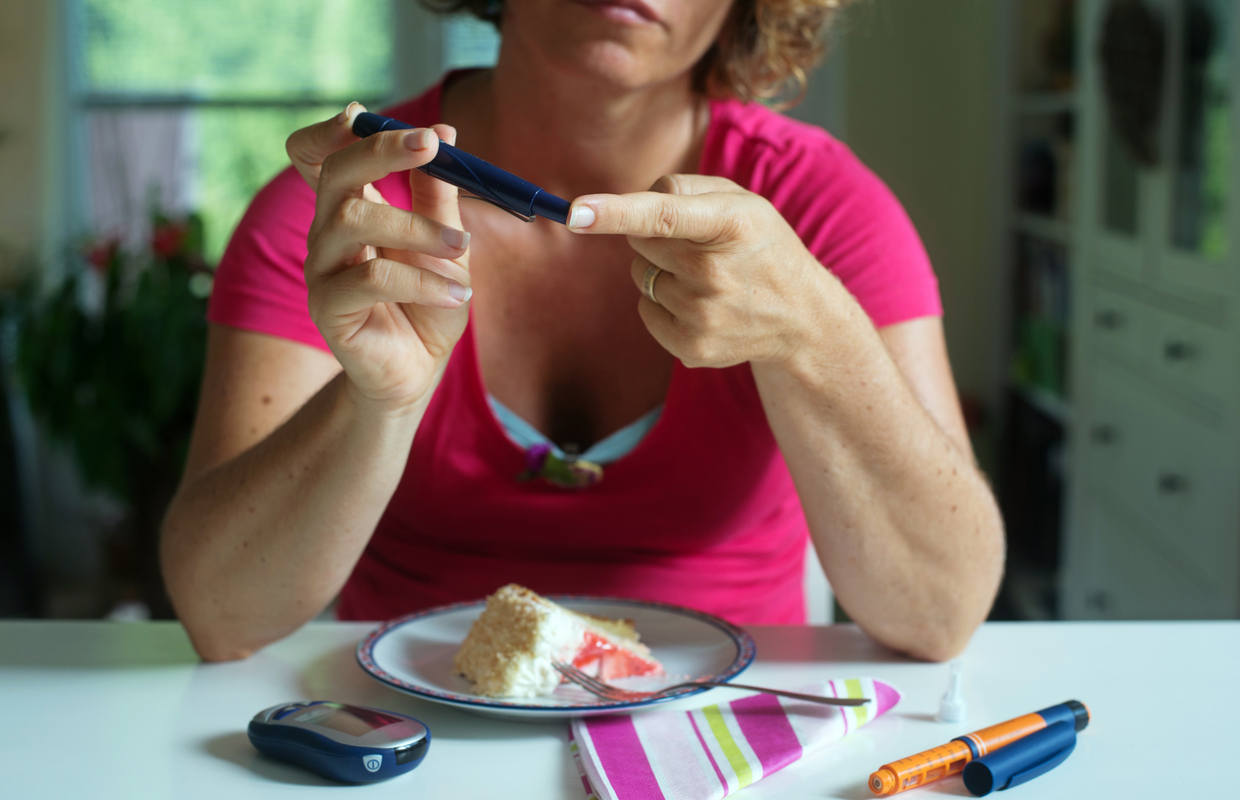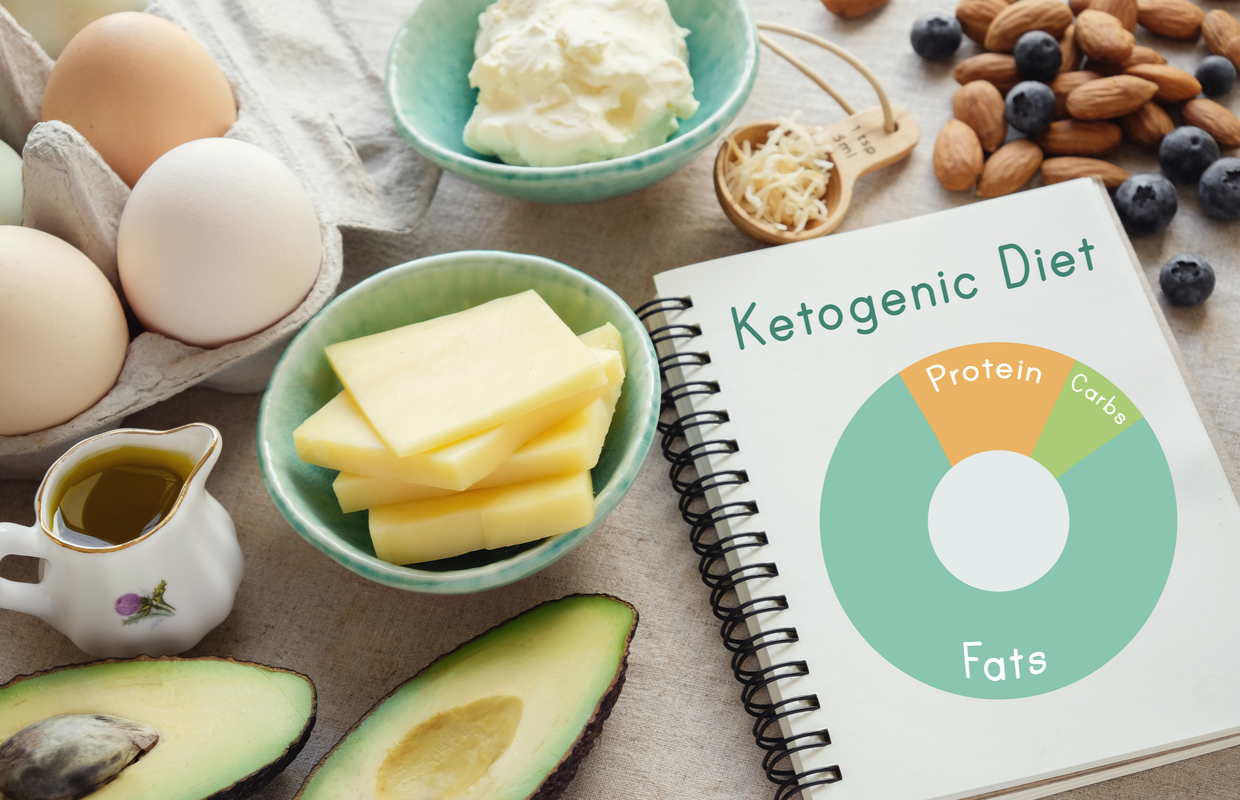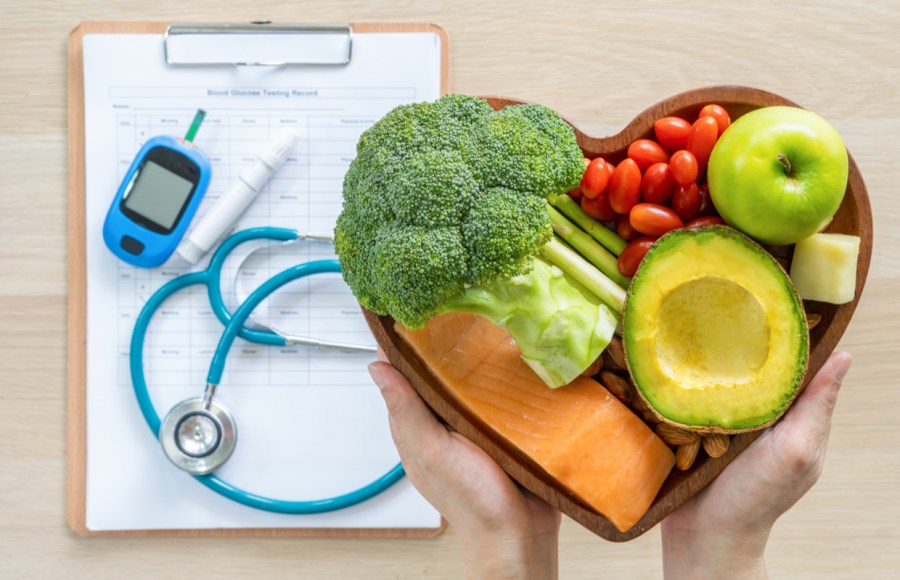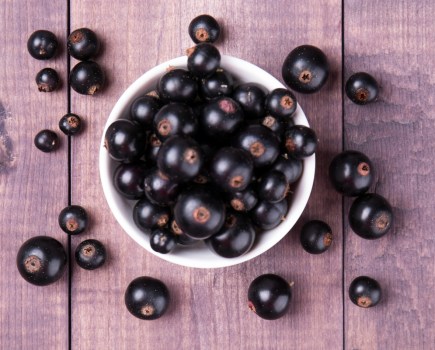Can you reverse type 2 diabetes with the keto diet? We take a closer look at the amazing benefits of the ketogenic diet, including healthy weight loss, reduced cravings and balanced blood sugar…
Many people who develop diabetes type 2 do so because of being overweight. While there are always exceptions to the rule, weight is definitely linked, which is why many people try the keto diet as it’s proven successful for many when both trying to lose weight and reverse type 2 diabetes.
What is the keto diet?
The keto diet is a popular method of weight loss, which involves the reverse way of eating to what we were all taught: rather than fill upon carbs and reduce fats, you’re encouraged to make fats the mainstay of your meals, with carbs making up no more than 10 percent of your food intake.
Most of your calories will come from healthy, fatty foods such as oily fish, avocados, nuts, full-fat dairy, seeds and oils, as well as non-starchy vegetables and low-sugar fruits.

Can you reverse type 2 diabetes with the keto diet?
The benefits of following the keto diet include supporting weight loss, suppressing appetite, controlling cravings and, for some, you can even reverse type 2 diabetes.
‘After eating carbs, your body releases a hormone called insulin to help balance out blood sugar levels,’ says Rob Hobson, nutritionist and author. ‘Highly refined carbohydrate foods such as white bread, pasta and sugar have a much greater impact on blood sugar and the effect of insulin can cause a crash in energy, leading to a hunger for similar food.
‘Fat is digested in a different way and is not only more satiating but keeps you fuller for longer, which is useful if you’re trying to lose weight,’ he says. Therefore, by lowering your intake of highly refined carbohydrate foods with the keto diet, you’ll lose weight and balance your blood sugar levels which, in turn, can help you to reverse type 2 diabetes.
How does the keto diet help with weight loss?
‘There are many studies that show how the ketogenic diet can help you lose weight and improve your health. Initially, people tend to lose weight and body fat more quickly than a traditional low-fat diet, and while this difference in weight loss seems to disappear over time, it can still be very motivating when people experience these initial results,’ he says.
‘Also, it’s a misconception that the keto diet is highly restrictive as there are many ways to create healthy, balanced and tasty meals using the foods you are able to eat. As with any diet, planning is key, so you need to make sure you have the right foods at home first to ensure you can create balanced meals and healthy snacks.’
What are ‘healthy fats’?
‘You needn’t worry too much about the high intake of fat on a keto diet as this is used to fuel your body instead of carbohydrates, which in turn leads to weight loss,’ says Rob. ‘There’s still a lot of confusion surrounding fats but they’re not all created equally. Fat doesn’t necessarily make you fat and it’s a misconception that all fats are bad for you.
‘On a keto diet you’re looking mostly at monounsaturated and polyunsaturated found in olive oil, oily fish, avocado, nuts and seeds. These fats have been shown to benefit health in many ways, such as helping to reduce inflammation, increasing HDL (good) cholesterol and lowering non-HDL (bad) cholesterol.’

Busting myths about the keto diet
Nutritionist Rob Hobson busts some myths around the keto diet…
Is ketosis dangerous?
‘Many experts agree that the ketogenic diet is not harmful, and research has shown how it’s safe for significantly overweight or obese people. The keto diet is probably best followed short-term to help you achieve your weight loss goals before returning to a normal way of eating. The keto diet is not suitable for people with underlying kidney or liver issues.’
Will I be hungry all the time with the keto diet?
‘You should not be feeling hungry between meals on a keto diet as it involves eating mostly fat and protein, which are very filling. Including plenty of permitted vegetables at mealtimes is another good way to help fill you up and keep you feeling full as they have a very high-water content and are a source of fibre.
‘It’s fine to snack on something healthy if you are hungry between meals and this may be the case if you’re also engaged in lots of exercise alongside your diet.’
How long does it take for ketosis to kick in?
‘The time it takes to get into ketosis differs from person to person, but it generally takes 2-4 days if you are eating 20g-50g of carbs per day. Some people can take longer, and this may be due to different reasons such as not eating enough fat and eating too much protein. This makes it difficult to enter ketosis as protein in excess can be converted into glucose.
‘Once in ketosis, where your body is running off fat as a fuel, you will start to lose weight and body fat, but how much will depend on your body type and how well you to stick to the diet.’
Do you have to eat a lot of dairy on the keto diet?
‘Daily foods are high in fat and protein, which form the backbone of the keto diet, but there are options for plant-based eaters. Plant-based options for ketosis include vegan full-fat “dairy” (coconut yoghurt, vegan butter, cashew cheese, vegan cream cheese).
‘You can also eat vegan proteins such as soy products (tofu, soy milk and tempeh) and nut butters including peanut, cashew, almond and sunflower. Coconut products are also a good option and include coconut milk, coconut cream and unsweetened coconut.’
Related: Keto diet – 8 low carb snack ideas, swaps and recipes
Words: Katy Sunnassee and Rob Hobson | Images: Shutterstock








